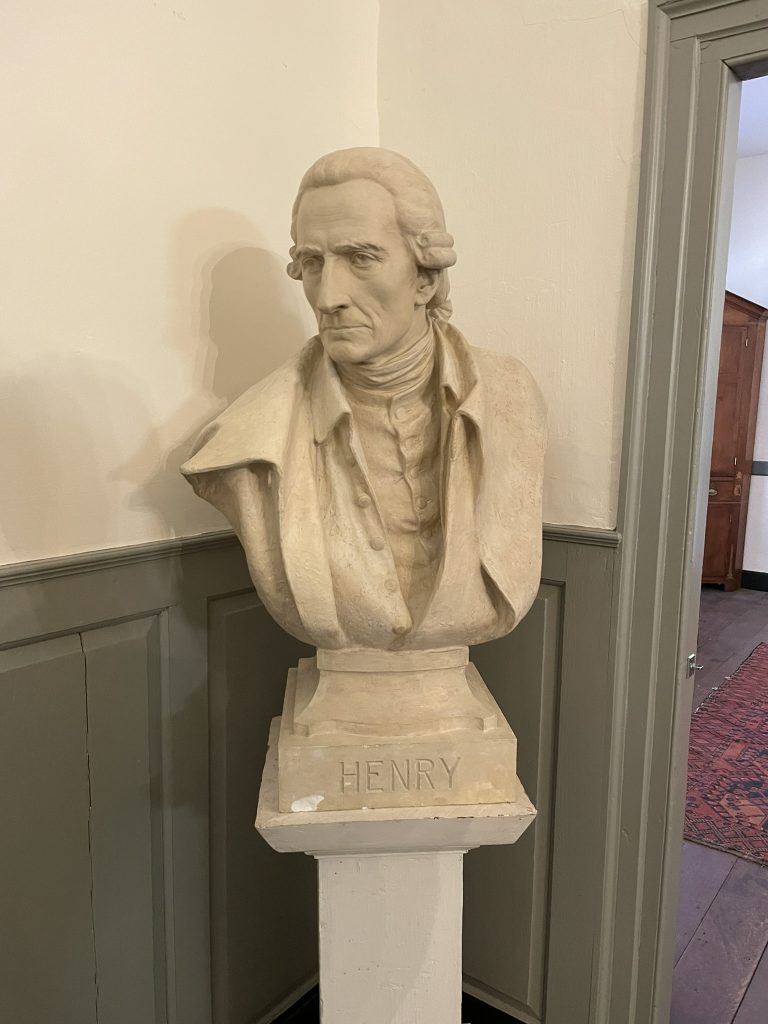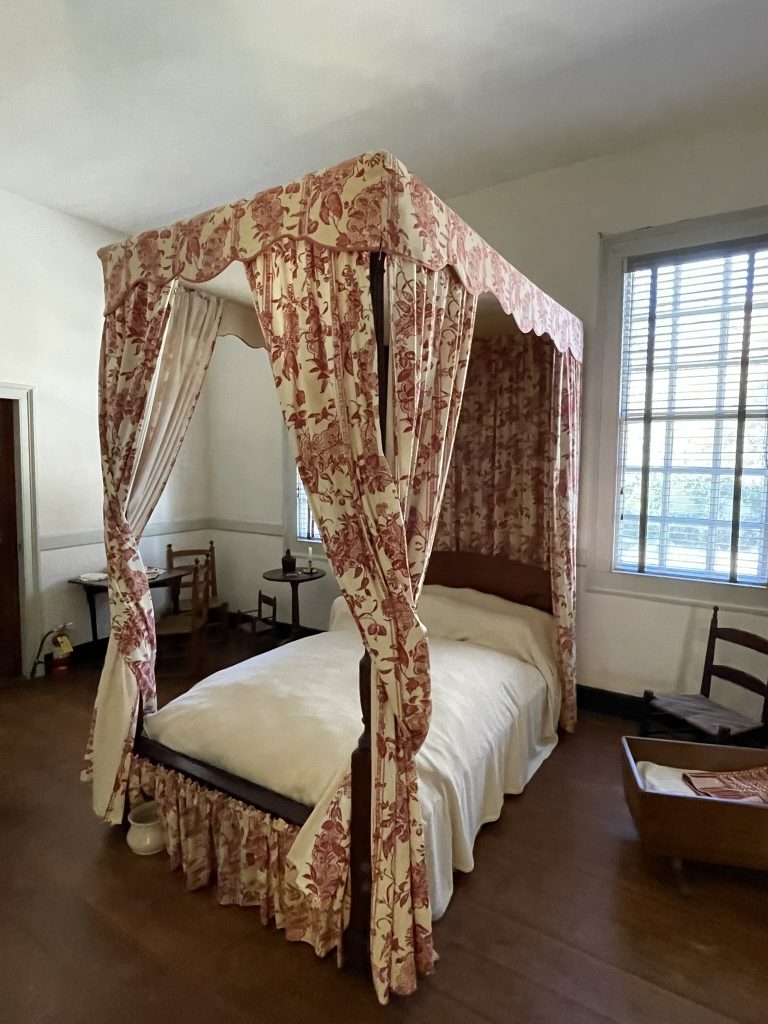
Patrick Henry’s Scotchtown, located about 30 miles north of Richmond, Virginia, was not the most exciting house we’ve visited, but it was interesting, especially in relation all the American Revolution sites we’ve experienced over the last few months.
Lawyer and Founding Father Patrick Henry (1736-1799) is known as “orator of the American Revolution” due to a little speech he gave in Richmond in 1775 declaring “Give me liberty, or give me death!” Perhaps you’ve heard of it? (You can read about our visit relating to that speech here.)

Henry was born and grew up nearby in Hanover County. He married a wealthy widow, Sarah, in 1754, and was supported by both his and her families in several failed career efforts. Eventually, Henry studied independently and passed the bar to became a lawyer.
In 1771, with fortunes rising and six children with Sarah already arrived, Henry bought Scotchtown from John Payne, the father of Dolley Madison (who lived here for a few months as a child).
Sadly, Sarah suffered from severe mental illness and died in the home in 1775. Henry married his second wife, Dorothea, in 1777, and went on to father 11 more children!

It was in this home where Henry is said to have “conceived his most influential revolutionary ideas,” including his most famous speech.The family relocated to Richmond when Henry was elected as Virginia’s first Governor in 1778.

It has been restored in appearance to the period when Henry lived here. It is one of the largest 18th century homes to survive in the United States, measuring 93 feet by 35 feet. There are eight large rooms surrounding a single central passage on the main floor, along with a full attic and basement. The original section was built in the 1720s, and it reached its present size around 1760.
We took a guided tour, which was just the two of us (where’s all the Henry fans at?), and after that did the walking audio-tour of the grounds, which was a bit underwhelming. I have to say, I am pretty much over looking at ice houses, laundries, kitchens, outhouses, and sites of wells.

The house is very simply decorated, with a few items directly related to Henry. Like in most historic homes tours these days, there was talk of slavery. At the time of his death, Henry owned 67 enslaved people.
On one hand, Henry believed slavery was wrong, but on the other, it made things much “easier” for him, and he rationalized the practice. As Henry wrote in 1773, “I am the master of slaves of my own purchase. I am drawn along by the general inconvenience of living here without them. I will not, I cannot justify it.” Ouch. Those founding fathers sure were conflicted.









One thought on “Patrick Henry’s Scotchtown”